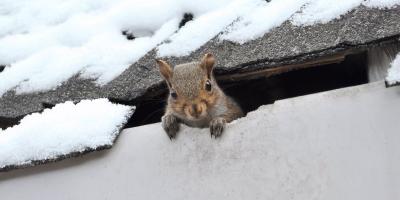Welcoming Students Back To School, Not Pests

September is on the horizon, and students (and parents, and teachers, and staff…) are gearing up for a new school year ahead. But while many may be focused on gathering books, dorm furniture, and teaching materials, school administrators have something very different on their radar: preventing pests from infesting learning and living areas when students return to school.
Keeping your school or university pest free demands consistent and thorough prevention, especially when hundreds or even thousands of students will be arriving over the course of just a few short days.
Fortunately, there are plenty of strategies to help prevent the spread of common pests through common entry points, helping you keep your learning facility free from pests straight through until next summer.
How Students Unknowingly Bring Pests To School
Students, staff, families, and other visitors can be a major factor in the spread of pests throughout your school or university.
Small pests - especially insects - can easily infiltrate student areas by laying eggs among commonly-carried items, including backpacks, clothing, bedding, and other linens students might be bringing with them. These pests (like bed bugs) can live in carpets and closets and can even survive a cold laundry cycle, meaning the likelihood for them to spread once they’ve made their way in is extremely high.
Larger pests - including rodents like mice and rats - are more likely to make their way inside on their own, often attracted by food and water left available for the taking. This means that students who maintain poor cleanliness habits, or facilities with poor maintenance or dirty common areas, will be more likely to attract pests looking to set up a nest and seek out food.
Although the methods by which different pests make their way onto the property may change depending on the pest, simple preventative actions taken by students and guests can usually offer a large buffer of protection against pest infestation.
Top Tips To Prevent The Spread of Pests
Fortunately for school administrators and staff, keeping pests from infiltrating your school or university is less difficult than it may seem. By implementing smart, year-round pest prevention strategies, you can more easily keep the temptation for pests at a minimum and keep your student and learning areas pest-free all year long.
1. Keep Students Well-Informed
In the process of preventing pest infestations in your school or university, one old piece of wisdom remains as true as ever: an ounce of prevention is worth a pound of cure.
In this instance, that means stopping pests by keeping students up-to-date and well-informed on exactly how pests can make their way into living and learning areas, as well as key strategies for removing pest problems before arriving at school.
Offering guided instruction on pest removal, on where pests are most likely to be found, and on top ways to prevent the spread of pests between students can offer a major benefit to your pest prevention efforts in the long run - a notable benefit compared to investing time and money in pest prevention after the fact.
2. Encourage Clean Student Habits
Keeping pests from even entering your learning areas in the first place is only half of the battle when it comes to pest prevention. The other major factor: preventing the spread of pest who have already arrived, which can significantly reduce the cost and time needed to fully remove the infestation to begin with. This means teaching students how to best prevent pests from moving from room to room.
Clean living habits in dormitories and common areas can be a huge benefit to your pest prevention efforts. Because most pests come looking for only a few basic needs - food, water, and shelter - simply teaching students to keep spaces clean, free of food scraps, and organized can remove many of the temptations for pests looking to get comfortable.
3. Keep Buildings Clean and Well-Maintained
As critical is it is to encourage students to keep clean habits in order to prevent pest infestation, school staff and administrators also need to practice careful cleaning and maintenance to help keep pests to a minimum.
Full trash receptacles can serve as a major temptation for mice, cockroaches, ants, and other pests looking to make a home on your campus. It’s critical for school staff to keep these areas clean and clear, and to keep trash from building up to levels likely to attract pests.
And because many pests also come looking for a source of water, poorly-maintained bathrooms and leaky pipe areas can also be flashpoints for pest infestations looking to spread. Addressing leaks and cleaning up pools of water are key to keeping water out of reach of pests in the long term.
4. Respond Quickly To Pest Issues
While no school or educational institution wants to deal with the reputation damage caused by a pest infestation, the worst thing to do is to ignore the problem, or to try and sweep it under the rug. Students, staff, teachers, and other guests should be kept fully abreast of any pest removal processes to aid the process and ensure pests do not simply continue to spread during the removal process.
By making it easy for students to report pest problems - and by responding quickly when they do - you can significantly reduce the chances for a pest problem to grow even further. The more quickly and forcefully you respond at the start, the more quickly the problem will be resolved in a safe and effective manner.
Don’t Let Pests Distract Students From Their Studies
Colleges, dormitories, and school buildings are designed to hold a large and diverse student body - meaning these are some of the most likely spaces to suffer from pest problems with each new school year.
By taking clear, concrete steps to prevent the spread of pests, and by keeping an experienced pest professional ready to move into action at the first sign of trouble, you can significantly decrease the chance for a pest to settle in and wreak havoc for students, staff, and visitors alike.
Your staff and administrators have enough to think about with the new school year ahead, and pests should not be one of them. By following these simple steps, you can ensure your facility keeps it focus on education all year long.



